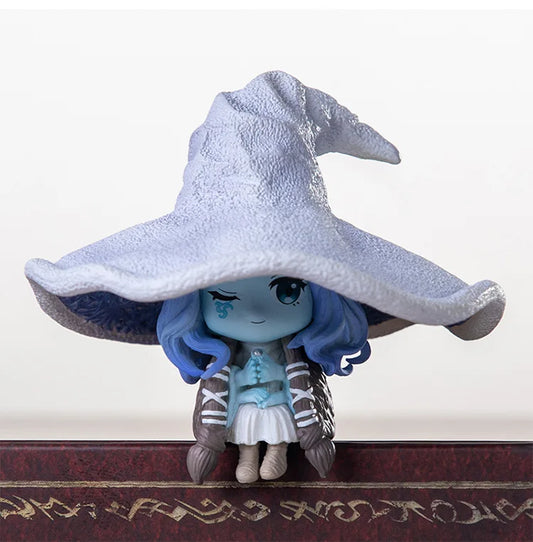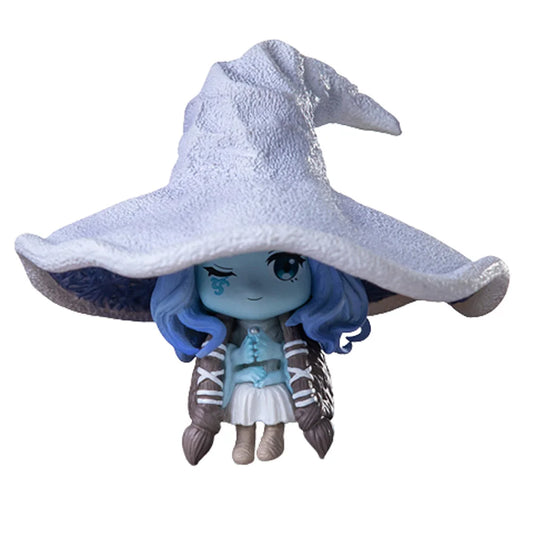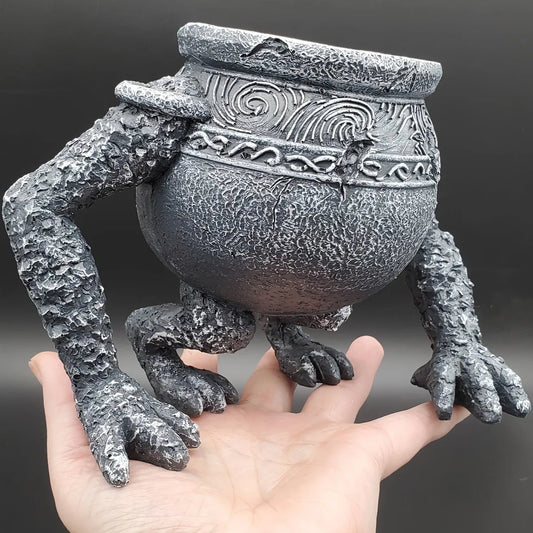The Unexpected Collaboration: George R.R. Martin's Crucial Role in Shaping Elden Ring's Rich Lore
In the world of video game development, collaborations between game designers and renowned authors are rare. Yet, one such partnership has captured the imagination of both gamers and literary enthusiasts alike. The unexpected collaboration between George R.R. Martin, the mastermind behind the "A Song of Ice and Fire" series, and FromSoftware, led by the visionary game director Hidetaka Miyazaki, has resulted in one of the most critically acclaimed games of recent years: Elden Ring.
This article delves deep into the nature of Martin's contribution to Elden Ring, exploring how his involvement shaped the game's rich lore and backstory. We'll examine the development process, the impact on the gaming industry, and the broader implications for collaborative game development.
The Genesis of an Unlikely Partnership
The collaboration between George R.R. Martin and Hidetaka Miyazaki began with a simple meeting that would eventually lead to the creation of a vast and intricate fantasy world. Miyazaki, a long-time fan of Martin's work, approached the author with the idea of creating a game together. Martin, intrigued by FromSoftware's reputation for creating deep, lore-rich games, agreed to lend his world-building expertise to the project.
Historical Context
The initial collaboration took place several years before Elden Ring's release. During this time, Martin worked closely with the FromSoftware team to lay the foundations of the game's universe. This process involved several meetings and extensive writing sessions, where Martin crafted the historical backdrop that would serve as the canvas for the game's narrative.
Development Timeline
While specific dates are not publicly available, the development of Elden Ring is known to have spanned several years. Martin's involvement was primarily during the early stages, providing the lore and backstory that would inform the game's design and narrative elements throughout its development cycle.
Current Relevance: Elden Ring's Monumental Success
Elden Ring's release in February 2022 was met with overwhelming critical acclaim and commercial success. The game has sold millions of copies worldwide and has been praised for its intricate world-building and deep lore, much of which can be attributed to Martin's foundational work.
Impact on the Gaming Industry
The success of Elden Ring has set a new precedent for collaborative game development, particularly in terms of world-building and narrative depth. It has demonstrated the potential for synergy between literary authors and game developers, opening doors for similar partnerships in the future.
George R.R. Martin's Role in Elden Ring
To understand the significance of Martin's contribution, it's essential to delve into the specific aspects of the game world he helped create.
Creation of the Game's Backstory and History
Martin's primary role was to craft the historical foundation of the Elden Ring universe. As he explained in an interview:
"I went back and wrote a history of what happened 5,000 years before the current game, and who all the characters were, and who was killing each other, and what powers they had."
This deep historical context provided the FromSoftware team with a rich tapestry of lore to draw from, informing everything from character motivations to the game's central conflicts.
Development of Characters and Their Relationships
Martin created a cast of complex characters with intertwining relationships and conflicting motivations. These characters, while not directly appearing in the game as Martin envisioned them, served as the progenitors of the game's major figures and factions.
Establishment of the World's Mythology
The author also laid the groundwork for the game's mythological elements, including the concept of the Elden Ring itself and the consequences of its shattering. This mythology permeates every aspect of the game world, from its landscapes to its creatures.
Hidetaka Miyazaki's Utilization of Martin's Work
While Martin provided the foundational lore, it was Miyazaki and his team who transformed these ideas into the game we know today.
Adaptation of Martin's Lore into Game Mechanics
Miyazaki used Martin's work as a "dungeon master's handbook," drawing inspiration from the lore to create gameplay mechanics and narrative elements that players would directly interact with. This approach allowed the team to maintain creative freedom while still honoring Martin's vision.
Transformation of Characters into Game Entities
One of the most interesting aspects of this collaboration was how Miyazaki transformed Martin's characters. As Miyazaki explained:
"George R.R. Martin wrote the broader mythos for this game, and in collaborating with him, we weren't just inspired by his work, but we used it as a base for our own characters."
Many of the characters Martin created were reimagined as the grotesque and formidable bosses that players encounter throughout the game.
Creative Freedom in Narrative Development
Miyazaki maintained creative control over the game's immediate narrative, ensuring that the story served the player experience above all else. This decision allowed the team to adapt Martin's lore flexibly, creating a game that felt both deeply rooted in its history and responsive to player actions.
Impact on Game Development and Storytelling
The collaboration between Martin and FromSoftware has had far-reaching implications for the gaming industry.
Precedent for Author-Developer Collaborations
Elden Ring has set a new standard for collaborations between authors and game developers. It demonstrates how literary talent can be effectively integrated into game development to create rich, immersive worlds.
Enhanced Player Engagement Through Deep Lore
The depth of lore provided by Martin's work has significantly enhanced player engagement. Elden Ring players have spent countless hours piecing together the game's history and mythology, creating a vibrant community of lore enthusiasts.
Balance Between Narrative Depth and Gameplay Experience
Perhaps most importantly, Elden Ring has shown how to strike a balance between deep narrative lore and engaging gameplay. The game's story and world-building enhance the player experience without overshadowing the core gameplay mechanics.
Controversies and Debates
Despite its success, the nature of Martin's involvement in Elden Ring has been a subject of some debate.
Scope of Martin's Contribution
Initial marketing for the game led some to believe that Martin had a more significant role in writing the game's immediate story. This misconception was later clarified, with both Martin and Miyazaki explaining the focused nature of the author's contribution.
Marketing Versus Actual Involvement
The discrepancy between marketing materials and the actual scope of Martin's work led to discussions about transparency in game marketing and the importance of clear communication regarding collaborative efforts.
Creative Control and Adaptation of Original Ideas
The transformation of Martin's characters and ideas by the FromSoftware team has also been a point of interest. While some have questioned how much of Martin's original vision remains in the final product, others have praised the creative synergy between the author's ideas and Miyazaki's game design philosophy.
Comparisons with Similar Collaborations
To better understand the unique nature of the Elden Ring collaboration, it's helpful to compare it with other notable author-developer partnerships in the gaming industry.
| Game | Collaboration | Impact |
|---|---|---|
| Elden Ring | George R.R. Martin and FromSoftware | Deep historical lore and world-building |
| The Witcher 3 | Andrzej Sapkowski and CD Projekt RED | Faithful adaptation of existing book series |
| Dragon Age: Inquisition | BioWare and various fantasy authors | Rich character development and branching narratives |
While The Witcher 3 represents a more direct adaptation of existing literary work, and Dragon Age: Inquisition involved multiple authors in crafting its narrative, Elden Ring stands out for its use of an author's work as a foundation for original game development.
How To: Creating a Rich Game World Through Collaboration
For game developers interested in following in FromSoftware's footsteps, here are some key steps to creating a rich game world through collaboration:
-
Identify potential collaborators with complementary skillsLook for authors or world-builders whose style aligns with your game's vision.
-
Establish clear roles and expectationsDefine the scope of the collaboration early on to avoid misunderstandings.
-
Develop a comprehensive world-building processCreate a structured approach to developing the game's lore and history.
-
Integrate collaborative elements into game design seamlesslyEnsure that the lore informs gameplay mechanics and narrative elements organically.
-
Maintain open communication throughout developmentRegular check-ins and updates can help keep the collaboration on track and aligned with the game's vision.
FAQ: Unraveling the Martin-Miyazaki Collaboration
How did George R.R. Martin's writing style influence Elden Ring's narrative?
What challenges arose from integrating an author's work into game development?
How has the collaboration affected Martin's other writing projects?
Will there be future collaborations between Martin and FromSoftware?
How does Martin's contribution to Elden Ring compare to his work on TV adaptations?
Challenges and Solutions in Collaborative Game Development
Balancing Creative Vision with Game Mechanics
Challenge: Integrating
Challenge: Integrating an author's expansive world-building into the constraints of game design can be challenging.
Solution: Miyazaki's approach of using Martin's work as inspiration rather than strict canon allowed for flexible adaptation to gameplay needs. This method enabled the team to maintain the essence of Martin's world while ensuring it fit seamlessly into the game's mechanics and overall design.
Managing Public Expectations
Challenge: Initial marketing led to some misconceptions about the extent of Martin's involvement in the game's development.
Solution: Clear communication from both Martin and Miyazaki about the nature of the collaboration helped manage expectations. By transparently discussing Martin's role in creating the game's backstory and mythology, rather than its immediate narrative, the team was able to clarify any misunderstandings.
Integrating External Creative Input into an Established Development Process
Challenge: Incorporating an external creator's ideas into FromSoftware's established game development workflow presented potential obstacles.
Solution: Establishing clear guidelines and workflows for how Martin's contributions would be utilized in the game's development was crucial. This involved creating a structured process for translating Martin's lore into game elements and ensuring all team members understood how to incorporate this external input.
Ethical Considerations and Best Practices
- Transparency in Marketing and Promotion: Clearly communicating the nature and extent of collaborative efforts to avoid misleading consumers. This includes being specific about the roles of all major contributors in promotional materials.
- Respecting Creative Contributions: Ensuring that all team members, including external collaborators, receive appropriate recognition for their work. This involves crediting contributors accurately and acknowledging the specific aspects of the game they influenced.
- Balancing Artistic Integrity with Commercial Interests: Striving to maintain the artistic vision of both the author and the game developers while meeting commercial objectives. This requires a delicate balance between creative freedom and market demands.
Success Stories: The Triumph of Elden Ring
Elden Ring's critical acclaim and commercial success serve as a testament to the potential of author-developer collaborations. The game has:
- Sold over 20 million copies worldwide as of February 2023
- Received numerous Game of the Year awards
- Garnered praise for its deep lore and intricate world-building
The positive reception of the game's lore and world-building has led to extensive community engagement, with players dedicating countless hours to uncovering and interpreting the game's hidden stories and mythologies.
Tools and Resources for Collaborative Game Development
- Collaborative Writing and World-Building Software: Tools like World Anvil or Campfire Pro can help organize and share complex lore and world-building elements.
- Project Management Tools for Cross-Disciplinary Teams: Platforms like Jira or Trello can facilitate communication between writers, designers, and developers.
- Lore Databases and Wikis: Establishing internal wikis or using platforms like Notion can help keep track of complex narrative universes.
Conclusion: A New Chapter in Game Development
The collaboration between George R.R. Martin and FromSoftware in creating Elden Ring represents a significant milestone in the gaming industry. It demonstrates the potential for synergy between literary world-building and interactive storytelling, opening new avenues for creating rich, immersive game worlds.
Martin's crucial role in shaping Elden Ring's world has not only contributed to the game's success but has also set a precedent for future collaborations between authors and game developers. As the gaming industry continues to evolve, we can expect to see more partnerships that blur the lines between literature and interactive entertainment, potentially revolutionizing how stories are told and experienced in digital realms.
The lasting impact of this collaboration extends beyond Elden Ring itself, influencing how developers approach world-building and narrative design in games. It challenges the industry to think more expansively about the potential sources of inspiration and expertise that can be brought into the game development process.
As we look to the future, the success of Elden Ring paves the way for more diverse and ambitious collaborations. Whether it's fantasy authors crafting the lore for RPGs, science fiction writers conceptualizing the universes of space exploration games, or historical novelists providing authenticity to period pieces, the possibilities are as vast as the imaginations of the creators involved.
In the end, the Martin-Miyazaki collaboration serves as a powerful reminder of the magic that can happen when different creative disciplines come together, pushing the boundaries of storytelling and interactive entertainment. It's a testament to the power of collaboration and a glimpse into the exciting future of game development.
Additional Resources
For those interested in diving deeper into the world of Elden Ring and the collaboration between George R.R. Martin and FromSoftware, here are some valuable resources:
- Official Elden Ring Website: The game's official site, featuring trailers, lore snippets, and developer insights.
- George R.R. Martin's Blog: Martin occasionally discusses his involvement in Elden Ring here.
- FromSoftware's Official YouTube Channel: Features interviews with Hidetaka Miyazaki and other developers.
- Elden Ring Lore Compendium: A community-driven wiki dedicated to unraveling the game's complex lore.
- VaatiVidya's YouTube Channel: Known for in-depth analysis of FromSoftware games, including Elden Ring's lore.
These resources provide a wealth of information for fans looking to explore the depths of Elden Ring's world and the creative process behind its development. Whether you're a player seeking to understand the game's intricate backstory or a developer interested in the collaborative process that brought this world to life, these materials offer valuable insights into one of the most significant game releases in recent years.























